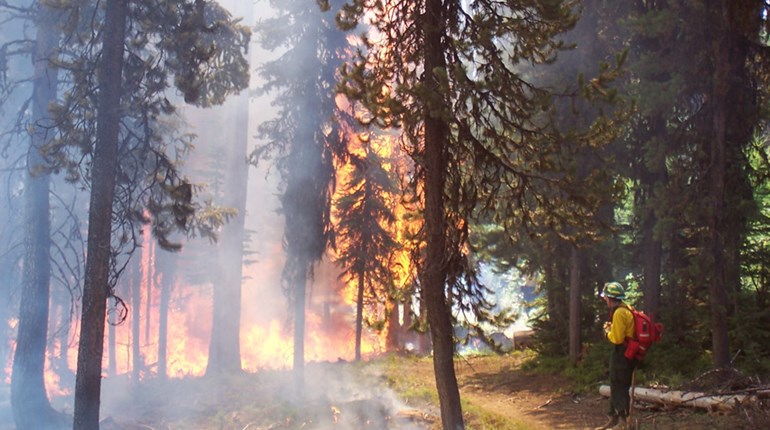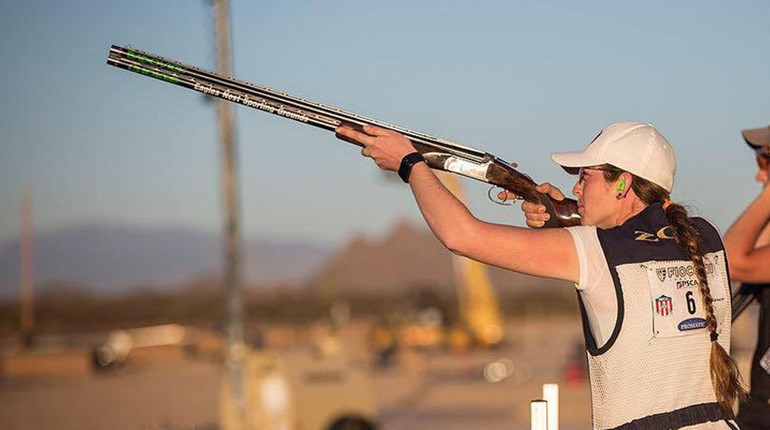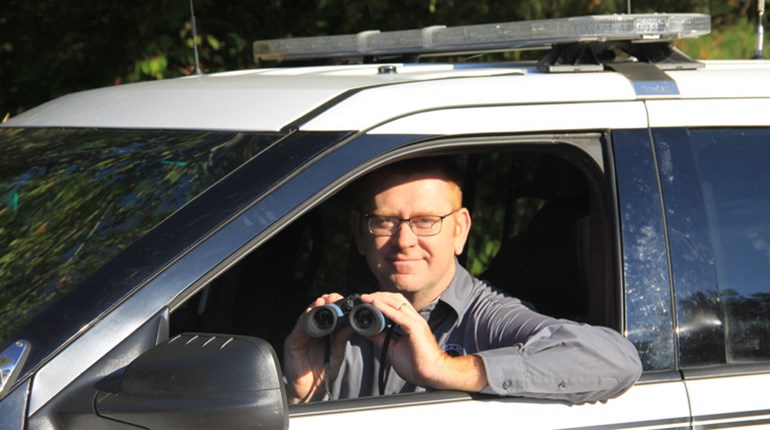
“It’s a great job! I love this job,” says Kathleen Harris. A park naturalist at Wisconsin’s Peninsula State Park, Harris was recognized in 2010 for Best Children’s Program by Friends of Wisconsin State Parks.Early on, Harris realized two things: She wanted to do something that would leave the Earth in better shape than how she found it, and she wanted to be an educator. For the former fourth-grade teacher with an advanced degree in science, the “cool job” of park naturalist was a perfect fit.
A Day On the Job
“Every day is an adventure for a park naturalist,” says Harris with enthusiasm. But in addition to having her own excellent adventures, Harris’s job is to make sure those who visit the park have excellent experiences, too. It’s a job she tackles with relish.For example, there’s the annual “Spook-tacular Hike” every October, complete with roving witches. As many as 2,000 hikers walk along a candlelit trail staffed by park employees and volunteers. “The purpose,” says Harris, “is spooky, educational fun.”Even though it’s aimed at kids 10 and under, the event attracts a lot of adults and middle schoolers, as well. At one station, the theatrically inclined Harris—dressed as an owl—delights hikers with a talk about owls as night hunters and how they adapt to their environment. She makes full use of props, such as pictures, wings and talons; and she teaches each passing group how to hoot. Other favorite stops along the trail include a mad scientist station, which is staffed by kids, and a luna moth station.
Plenty of Programs
Another favorite park event is a program on Chief Simon Kahquados, the last hereditary chief of the Potawatomi Nation, who is buried by a carved memorial pole on the park’s golf course. “We offer this program about once a month,” says Harris, “as a way to tie in site history and Native Nation history.”Natural history programs are always popular. At a recent “Honey of a Morning” program, attendees examined beekeeping equipment, tried on a bee suit and went on a catch-and-release meadow walk with nets.There is also an annual muzzleloading hunt, by special permit only. “The aim,” says Harris, “is reducing damage to the park vegetation caused by high numbers of whitetail deer.” This has led to a “ceremony of the hunt,” which is held the evening before. In keeping with Native American tradition, the ceremony features requests for a safe hunt and the passing of a ceremonial pipe.Other programs include guided trail hikes and bird walks, and talks about ecology and park history. Harris also helps visitors learn outdoor skills such as fire building or kayaking.
Additional Duties
Planning and presenting programs is a big part of Harris’s job—probably a little more than half. The same holds true for most naturalists. “Many naturalists teach elementary students who come to the park for a school field trip,” says Harris. “Others teach campers. Ages vary, but kids are a primary audience.”As for her other duties, Harris keeps records on such things as what is blooming at a particular time, conducts plant and animal surveys—for instance, what kinds of frogs breed in the park—and she is expected to know the human history of the area. “Other odds and ends,” says Harris, “include creating geocaches for the park, helping select merchandise to sell at the Nature Center, updating the nature website and fixing trails.”Finally, there’s all the writing. “You’d be surprised how much time I spend looking at a computer screen,” says Harris with a laugh. Her work involves everything from drafting a story about wildflowers for the local paper to updating websites, creating podcasts for park trails, providing photos to the media and writing reports for her boss.
Thumbs Up, Thumbs Down
Asked about her favorite part of the job, Harris responds with a list. “Creativity,” she says, “and the chance to always learn something new and share it with others.” She also likes the variety, the “lack of repetition.” Sure, there are hikes she could lead in her sleep. “But,” she adds, “even then, there is always an unexpected bird that flies overhead or unexpected tracks across the trail.”Of course, every job has its downside. Harris works most weekends, lots of evenings and almost all summer. So she doesn’t get to take family vacations during the hottest months and, says Harris, “I’m not always able to hang out with my friends when they’re off work.”
Could You Love This Job?
Is being a park naturalist the career for you? Do Harris’s daily “adventures” sound like something you’d enjoy doing, too? Well, first you need to ask yourself a few questions: Are you curious about your environment—the land around you? Do you like to be physically active? Do you look forward to learning new things? Do you like sharing what you know with others? If you answered yes to all these questions, maybe the job of park naturalist is the “cool job” in your future.





































